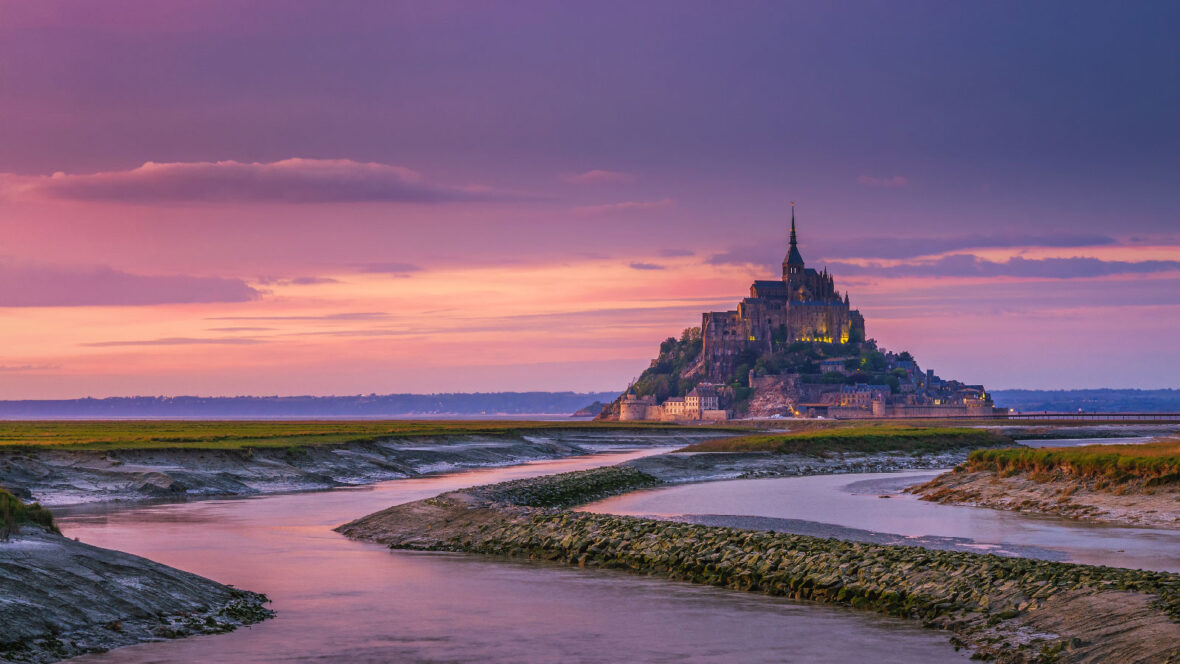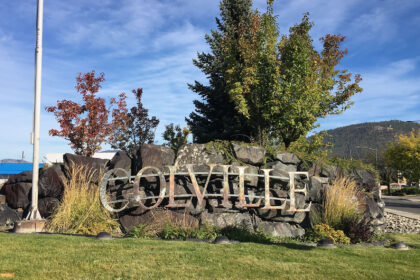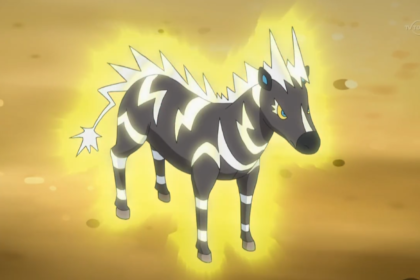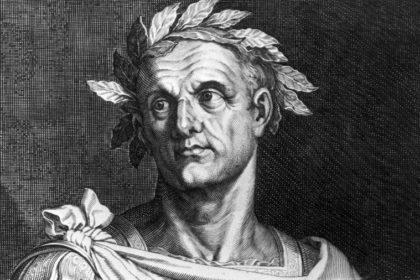Do you know those picture-perfect places that we hardly believe are real? Well, the medieval abbey of Mont-Saint-Michel is one of those places! Considered among France’s most spectacular sights, the abbey of Mont-Saint-Michel rests atop a rocky island, surrounded by a tidal bay. Its beauty is so , that you might wonder whether you’ve walked onto a film set or into a time whirlpool. Take a look below for 30 fun and fascinating facts about Mont St. Michel.
1. The island stretches across the far reaches of the Normandy countryside, where France meets the English Channel.
2. Mont St. Michel was built between the 11th and the 16th centuries and is truly an architectural masterpiece.
3. Mont St. Michel represents a historical and breathing testament of French history and culture.
4. In 708, according to legend, the Archangel Saint Michel appeared before the bishop of nearby Avranches, Aubert, and asked him to build a chapel in his honour on the nearby rocky ridge.
5. Aubert paid no mind to the vision, and the Archangel returned, this time getting serious by burning a hole in his head as a reminder, whispering to his ear “build it and they will come”.
6. Aubert’s skull is displayed at the Saint-Gervais d’Avranches basilica bearing the scar of Michael, although the marking is more probably evidence of drilling a hole into the skull for medical reasons.
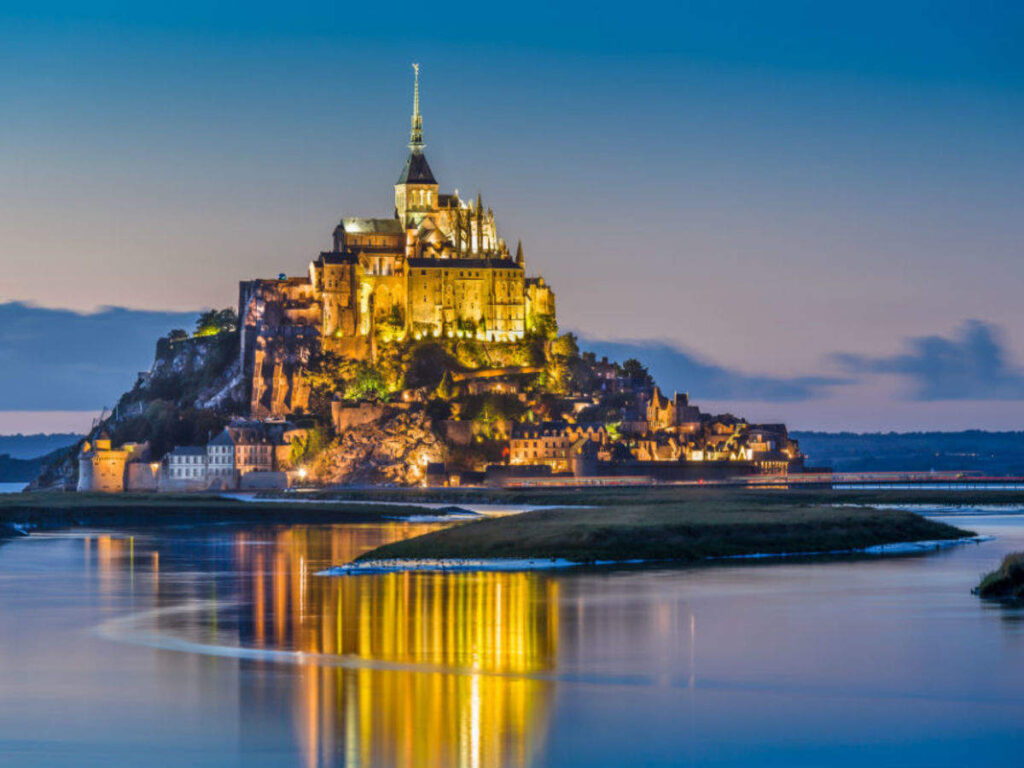
7. Nevertheless, Aubert was sanctified and the 10th of September is his holy day.
8. From 966 onwards, the dukes of Normandy, followed by the French kings, supported the development of a major Benedictine abbey on Mont-Saint-Michel.
9. Throughout the middle ages, wonderful monastic buildings were added. One high wing, in particular, was nicknamed the Marvel.
10. The Abbey of Mont St. Michel became a well-known centre of learning, drawing some of the greatest minds and manuscript illuminators in Europe.
11. Mont St. Michel is a structural hierarchy representing the feudal society.
12. In Mont St. Michel, God is on top, then the abbey and monastery below, the Great halls, stores and housing, and the fishermen’s and farmers’ housing at the bottom, outside the walls.
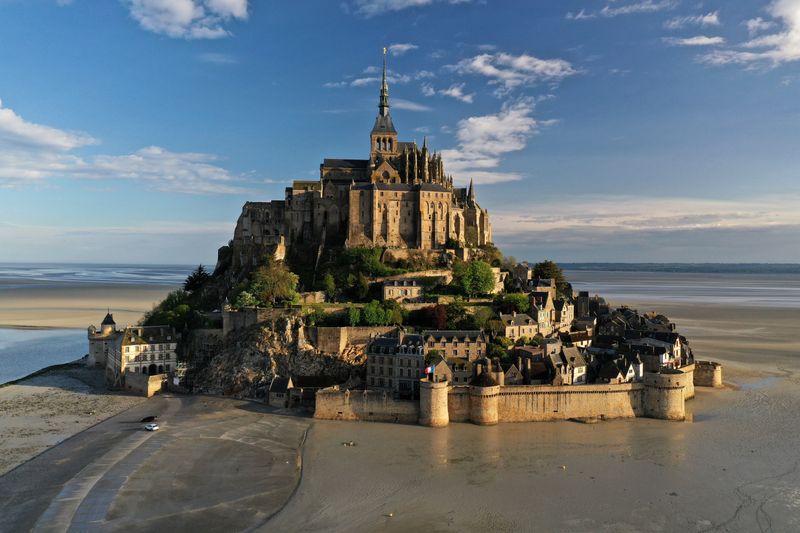
13. As the Archangel whispered “build it and they will come”, many pilgrims have visited, Mont St. Michel, despite the endless cross-Channel conflict.
14. The fortifications at the base of the island were built to keep the English forces out.
15. The position on a rocky ridge, in the bay, made the island the perfect fort.
16. During the Hundred Year War with England, the mount remained undefeated. Even with a small garrison they’ve managed to survive a 30-year siege and were often used as a symbol of French resilience.
17. During the French Revolution, religion was outlawed, and all religious practices were declared counterrevolutionary.
18. The rulers of France promptly turned the island into a prison, incarcerating clerical opponents of the republican regime.
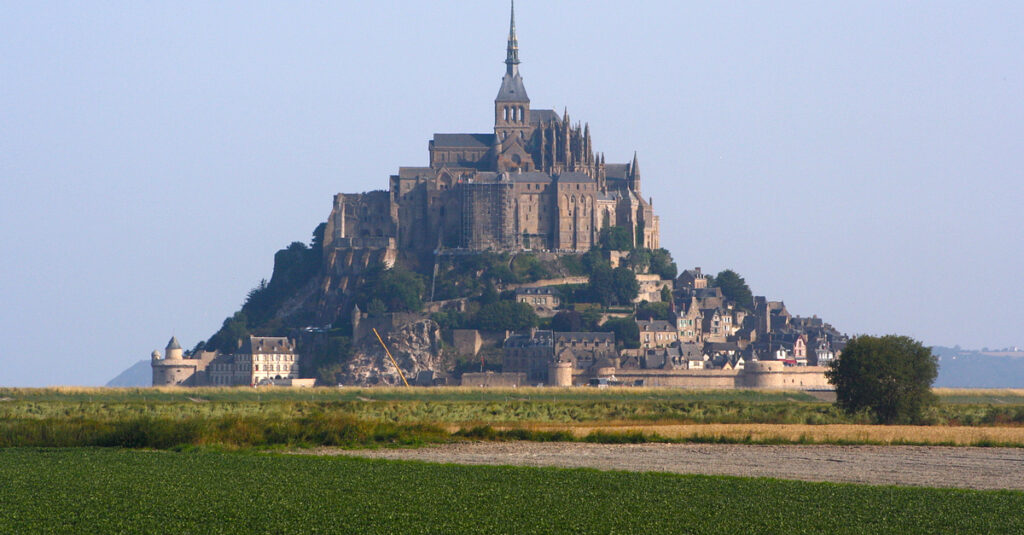
19. In 1863, the prison was finally closed and since then, several orders have periodically occupied the site.
20. The Benedictine monks have been replaced with the monks from the Monastic Fraternities of Jerusalem in 2001, and to this day they still occupy the site.
21. Many fine buildings on the island are now converted into museums, restaurants, hotels, and shops for today’s tourists, restoring the former glory of Mont St. Michel.
22. A speciality that can be found throughout the region is the pre-salted or salt meadow lamb, called Agneau de pré-salé in French.
23. The Bay of Mont St. Michel has been liable to silting up over the last couple of centuries.
24. Man-made activities, like farming and building a causeway to the mount, have added to this problem.
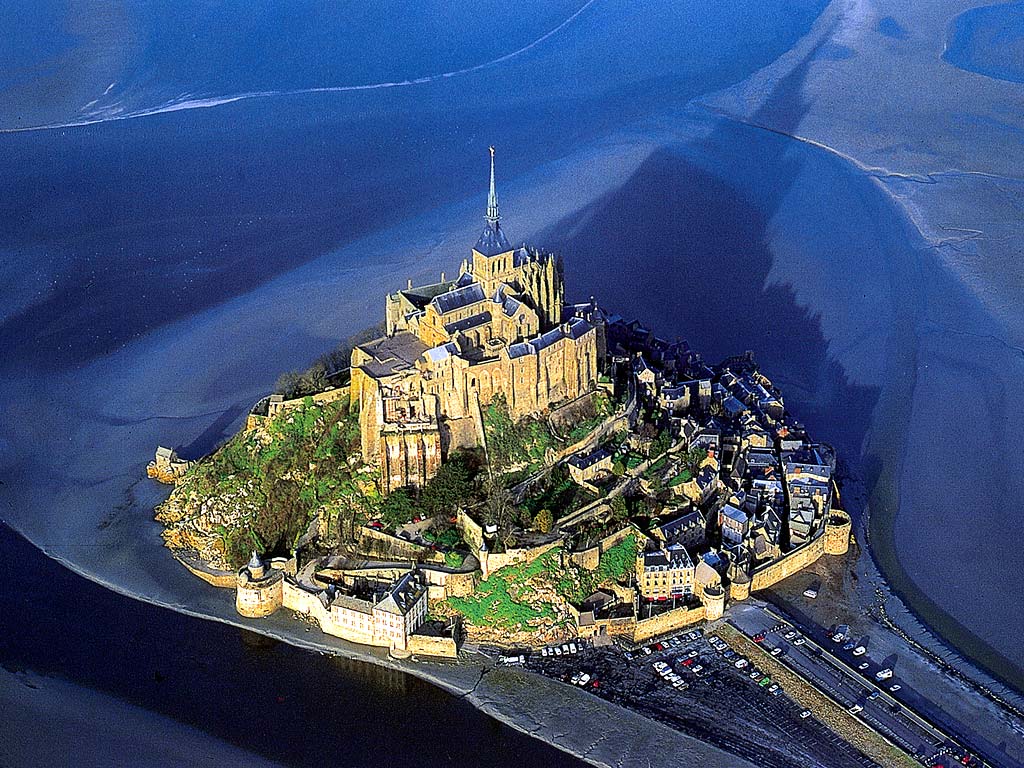
25. A grand conservation project back in 2015 has helped restore Mont-Saint-Michel’s island status.
26. Couesnon, the main river into the bay, has now been left to flow more freely to wash the sediments out to sea, and a bridge has replaced the former path, enabling the sea to surround the mount at particularly high tides once more.
27. Six or seven times a year when the big tides occur, Mont St. Michel becomes a complete island.
28. The 2nd most visited place in France, after Paris is Mont St. Michel.
29. The island has been attracting visitors for centuries. It rose from a famous pilgrimage of faith during the middle ages to prominence across all of Europe.
30. It was nicknamed “Saint Michael in Peril of the Sea” because of the dangers of crossing the bay, often complicated by quicksand and the fast tide, which took their toll on pilgrims.

